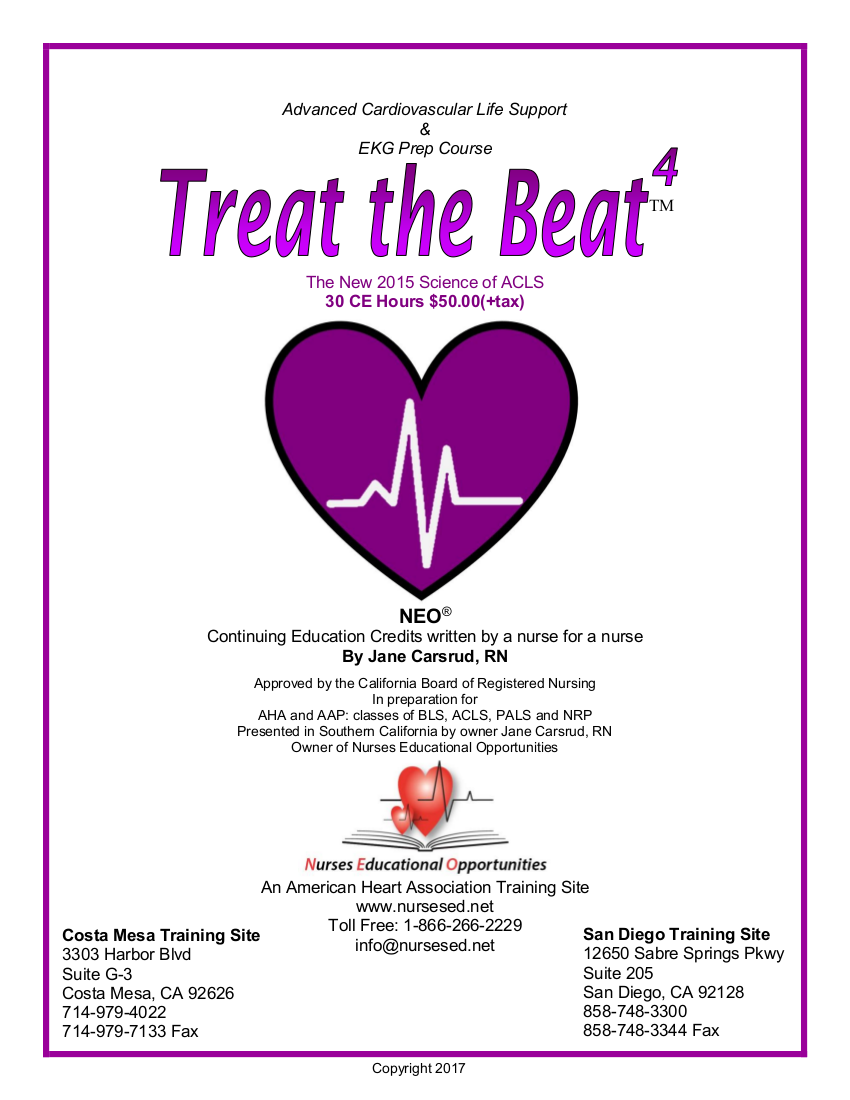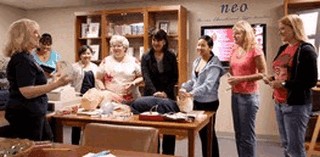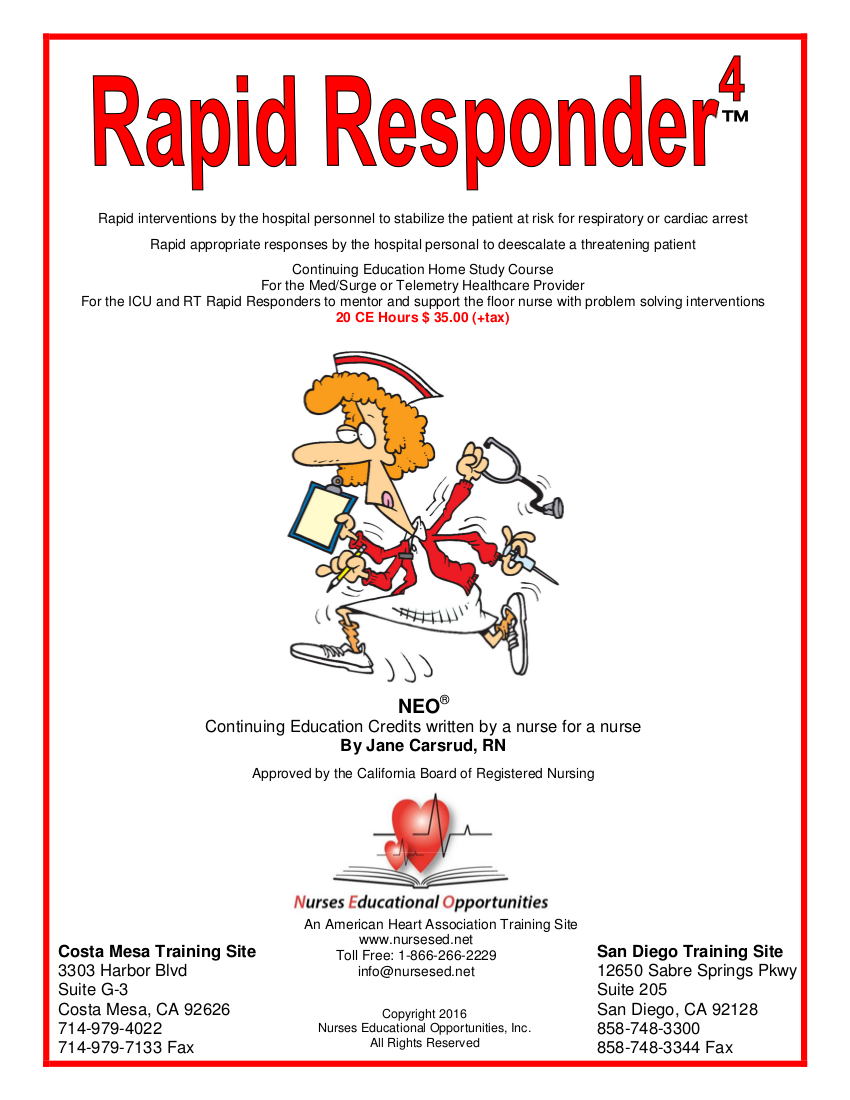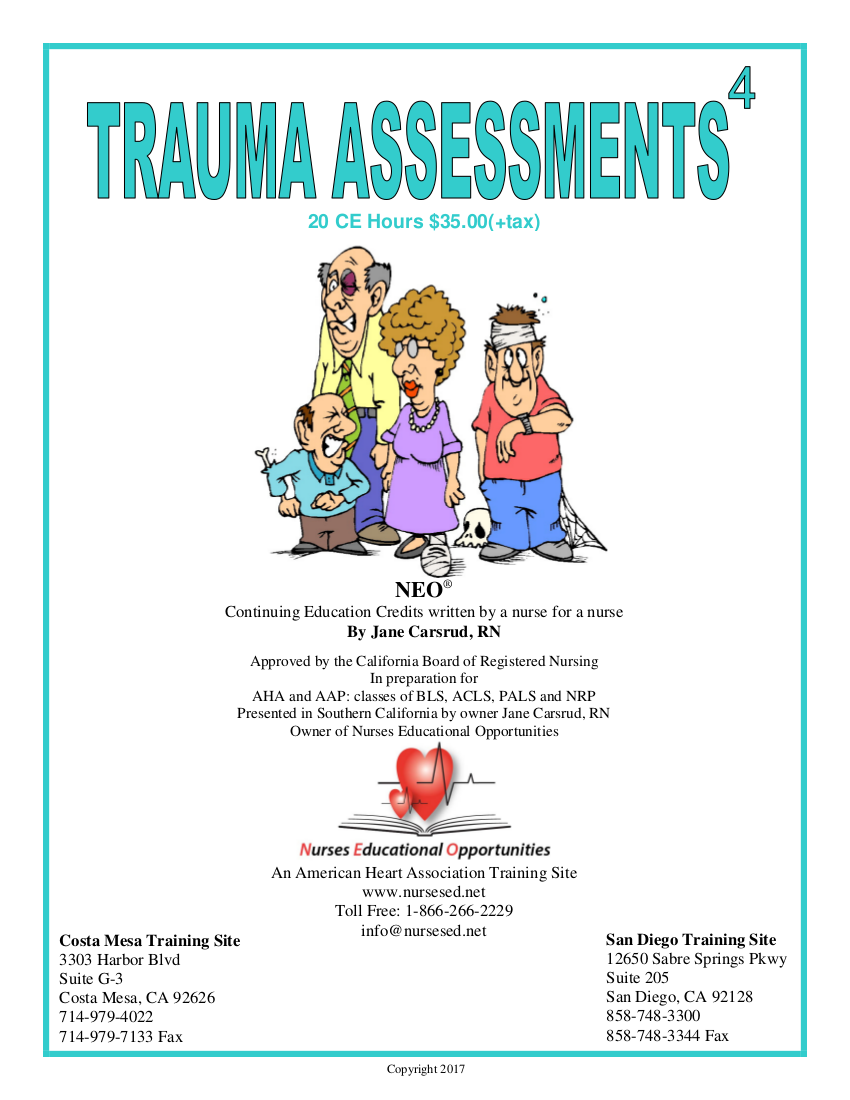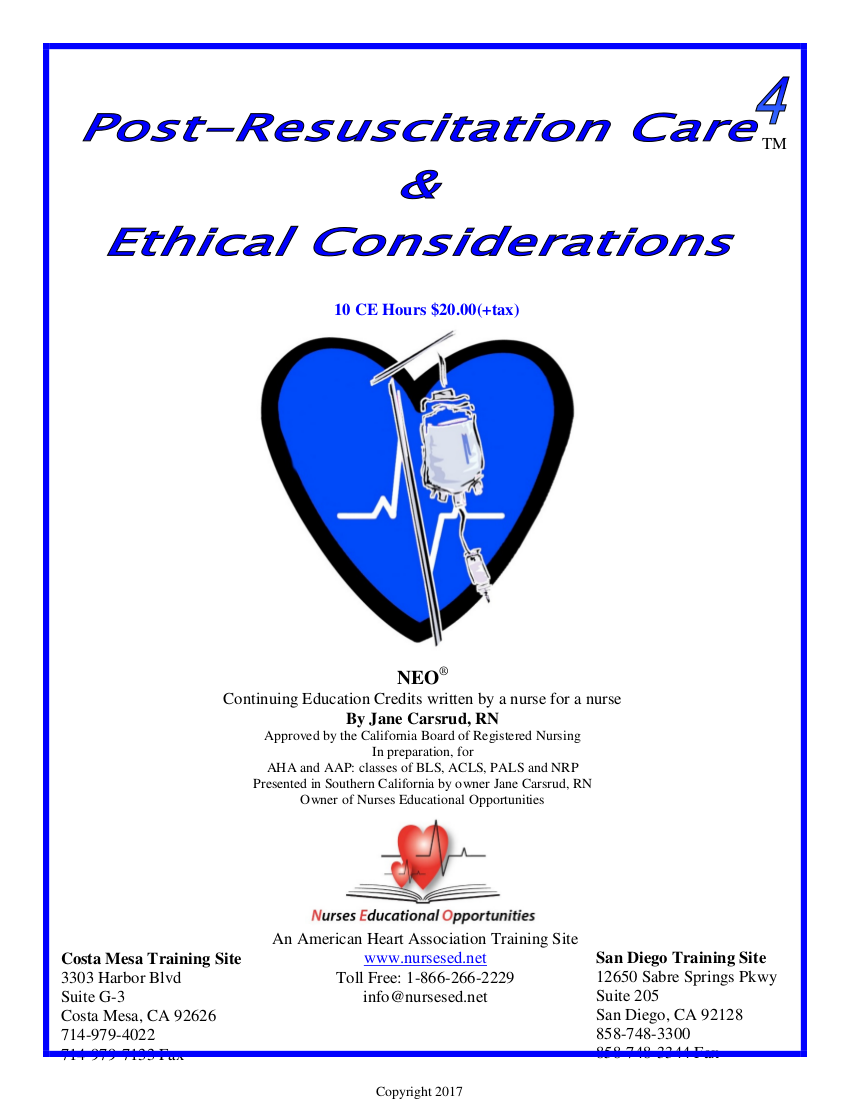
Postresuscitation Care
Price: $22
CEs: 10 CEs
Provider approved by the California Board of Registered Nursing, Provider Number 13004 for 10 contact hours.
Recommended For:
Prepare for ACLS for Healthcare Providers in the Hospital Setting. This course is appropriate for Nurses and other healthcare professionals to obtain 10 Contact Hours.
Healthcare Professionals who need to renew their license. This Home Course will review the most recent AHA ACLS Guidelines for adult resuscitation. It’s a step-by-step guide to starting a code, initiating CPR, and designating roles. This Nurses in Emergency Department (ED), Intensive Care Unit (ICU), Labor & Delivery Care (L&D), Med/Surg/Telemetry, Outpatient Surgical Centers, Nurses, Respiratory Therapists, Medical Doctors, and other healthcare professionals.
Upon completion of the Treat the Beat and Beyond the learner will be able to recognize and select appropriate drugs for the following rhythms:
- Ventricular Fibrillation
- PEA
- Asystole
- Sinus Bradycardia
- 1st, 2nd, 3rd Degree Blocks
- Paced rhythm
- Monomorphic VT
- Polymorphic VT
- Supraventricular Tachycardia
- Torsades de Pointes
Upon the completion of Treat the Beat and Beyond the learner will be able to:
- State the reason to call the code
- State three ways to open the airway
- State three ways to ventilate the patient
- State three ways to provide high quality CPR
- State the four universal steps of using the AED
- State four ways to provide the best chance of survival with the use of the AED
- State three goals of high-quality CPR
- Upon the completion of Treat the Beat and Beyond the learner will be able to:
- State four team dynamics of a Team Leader
- State four task that needs to be assigned for a code call
- Describe the difference between monophasic and biphasic defibrillation
- Sate four ways of confirming ET tube placement
- State four drugs used in a resuscitative event
- State four possible causes of a PEA
- Sate four interventions for a Asystole
- State four types of bradycardias
- State steps in preparing and using a TCP
- State one reason for cardioversion of a Tachycardia
- State steps in preparing for cardioversion
- Describe the difference between defibrillation and cardioversion
- Describe the difference between defibrillation and cardioversion
- Describe how to determine the medication for a stable tachycardia
- Identify the adjunctive therapies for ACS
- Verbalize the steps to determine an ischemic stroke
- Verbalize the time frame required to initiate stroke interventions
